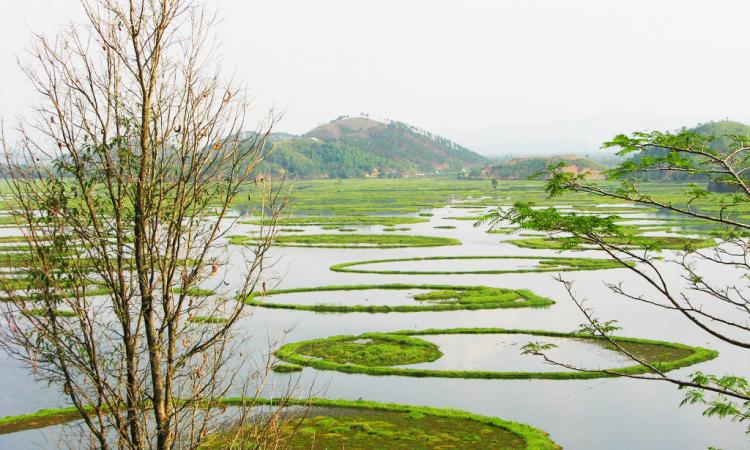
In a country as diverse as India where the mountain meets the ocean and deserts blend into forests, one hallmark of beauty that is often left out of the travel catalogues is the outstanding Loktak lake in Manipur.
Spread over 469 sq. km. in the northeastern state of Manipur, the Loktak wetlands complex is the lifeline of the state. Being the largest freshwater lake in India, this wetland is teeming with life. Livelihoods of over 100,000 people of Manipur depend on resources that are found here.
Incredibly enough, Loktak is a host to over 233 species of aquatic plants, over a hundred different species of migratory birds and several animal species, including the endangered Manipuri brow-antlered deer or the Sangai deer. This capacity to nurture a diverse bio-environment gives key economic significance to the Loktak complex. It also puts this lake on the map for another distinctive reason: The Phumdi. With its unique floating vegetation called Phumdi, the lake is known to be the only floating lake in the world.
Phumdi is like floating mats of vegetation which is a characteristic feature of these wetlands that helps maintain the water quality by trapping nutrients present in the lake. Almost completely solid in its form, these floating mats act as surfaces for the locals to construct their homes over, run small shops and businesses out of. It is on these very Phumdis present on the lake that one would be able to visit the only floating National Park in the world--The Keibul Lamjao National Park.
Like in the case of any well-preserved natural water body, it is the seasonal rising and falling of the water levels that are responsible for its existence.
In recent years, a poor understanding of the seasonal flows of water and a narrow focus on hydropower generation have transformed the naturally fluctuating lake into a mere reservoir. Regulating the wetlands for hydropower generation has led to an alteration in the ecology of the lake’s ecosystem resulting in the long-term damage to the wetland. Compared to its thriving past, Loktak seems to be sitting on the very fringes of being transformed into a reservoir with relatively marginal to insignificant ecosystem existing within itself.
‘Lets Invest in Nature’ (#LetsInvestInNature) is a special series of video stories designed by the Indo-German Biodiversity Programme. It is dedicated to estimating and mainstreaming the true economic value of biodiversity in business-related decisions and policy making. Watch this short video for more information.